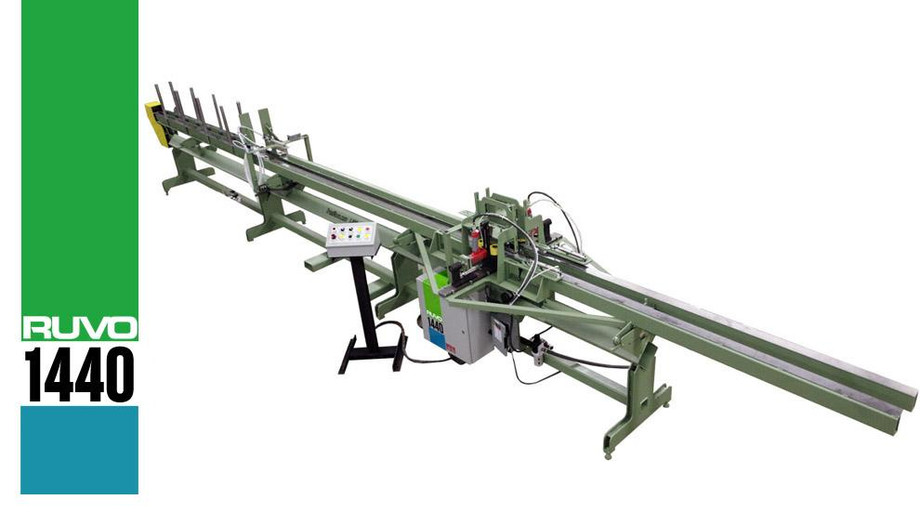The world of interior door manufacturing has seen remarkable advancements, thanks to the integration of cutting-edge technology and sophisticated machinery. The use of specialized interior door machines has streamlined the production process, resulting in higher efficiency, superior quality, and greater customization options. In this exploration, we will delve into the transformative world of interior door machines and how they are revolutionizing the interior door industry.
The Significance of Interior Doors
Interior doors play a pivotal role in the aesthetics and functionality of a building. They are not just barriers between rooms; they are elements of design, privacy, and sound insulation. The demand for customized, high-quality interior doors has led to the development of innovative machinery that can cater to various needs and styles.
Interior Door Manufacturing Challenges
Manufacturing interior doors poses several challenges, from precision cutting and shaping to ensuring consistent quality and minimizing waste. Traditional manufacturing methods involved a labor-intensive and time-consuming process that often led to inconsistencies and inefficiencies. Interior door machines have stepped in to address these challenges and provide solutions that not only improve production but also enhance the final product.
The Role of Interior Door Machines
Interior door machines are designed to automate and streamline various stages of door production. They are equipped with advanced technology, enabling precise cutting, shaping, and finishing, resulting in doors that meet the highest standards of quality and customization.
Here are some key aspects of how interior door machines are transforming the industry:
Precision Cutting: Modern interior door machines are equipped with computer numerical control (CNC) technology, which allows for precise and automated cutting of door components, such as stiles, rails, and panels. This level of precision ensures that doors fit perfectly within their frames.
Efficient Shaping: Interior doors come in a variety of designs, from traditional to contemporary. Interior door machines can easily shape door components to match specific design requirements, allowing for endless customization possibilities.
Consistency: These machines ensure that each door produced is consistent in terms of size, shape, and finish. This consistency is essential for maintaining high-quality standards and meeting customer expectations.
Waste Reduction: By optimizing the use of materials and minimizing errors, interior door machines contribute to a significant reduction in material waste. This is not only cost-effective but also environmentally responsible.
Speed and Efficiency: Interior door machines can produce doors at a much faster rate than traditional methods, leading to shorter lead times and increased production capacity.
Increased Customization: Customization is a growing trend in the interior door industry. Interior door machines make it easier to cater to individual customer preferences, such as door size, style, and finish.
Quality Assurance: These machines often include quality control mechanisms, ensuring that each door meets specified quality criteria. This is essential for customer satisfaction and brand reputation.
Types of Interior Door Machines
The interior door manufacturing process requires a range of specialized machines, each serving a specific purpose. Here are some common types of interior door machines:
CNC Routers: These machines are used for precise cutting and shaping of door components, allowing for intricate designs and accurate dimensions.
Edge Banders: Edge banding machines apply and trim edge banding materials to the door edges, providing a polished and finished look.
Door Assembly Machines: These machines automate the assembly process, including attaching panels, rails, stiles, and hardware, ensuring precise and efficient assembly.
Sanding Machines: Sanding machines smooth and finish the door's surface, preparing it for painting or staining.
Spraying and Coating Machines: These machines are used for applying finishes to doors, whether it be paint, stain, or clear coatings. They ensure an even and professional finish.
Door Embossing Machines: Embossing machines add textures or patterns to door surfaces, enhancing their visual appeal and tactile qualities.
Advantages of Interior Door Machines
The adoption of interior door machines has led to numerous advantages for manufacturers, customers, and the environment:
Enhanced Quality: Machines ensure consistent quality, leading to durable and aesthetically pleasing doors.
Improved Efficiency: The automation of various production processes results in increased production speed and reduced lead times.
Customization: Interior door machines can produce a wide range of door styles and sizes to cater to individual customer preferences.
Cost-Effective: Reduced material wastage, increased production efficiency, and consistent quality contribute to cost savings.
Sustainability: By minimizing material waste and energy consumption, interior door machines are more environmentally friendly.
The Future of Interior Door Machines
As technology continues to advance, the future of interior door machines looks promising. Some key trends to watch for include:
Smart Manufacturing: Integration of Internet of Things (IoT) technology for real-time monitoring and data analytics to optimize production.
3D Printing: The use of 3D printing technology to create intricate and highly customized door designs.
Sustainable Practices: Continued efforts to reduce waste and energy consumption, along with the use of environmentally friendly materials.
Increased Automation: Further automation of production processes to achieve even higher levels of efficiency and productivity.
AI and Machine Learning: The use of artificial intelligence and machine learning algorithms to improve quality control and optimize production parameters.
For More Info:-
Vertical workflow door assembly
Door material handling equipment






Comments